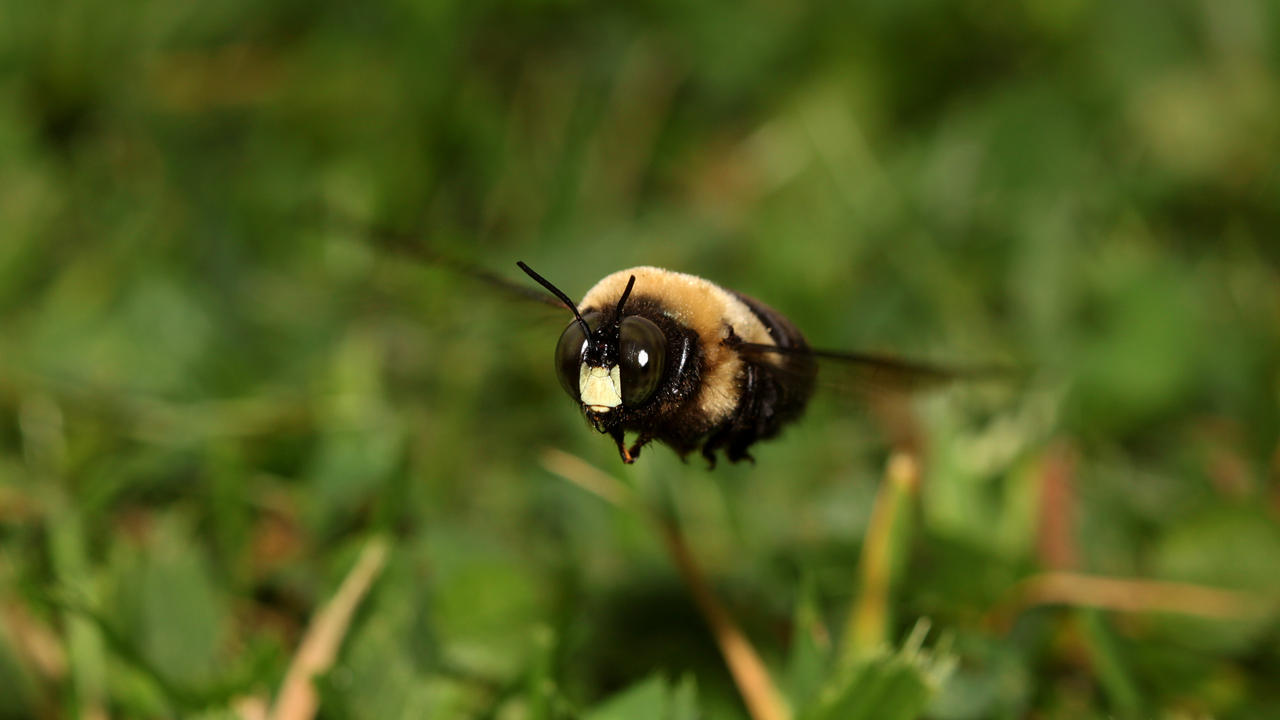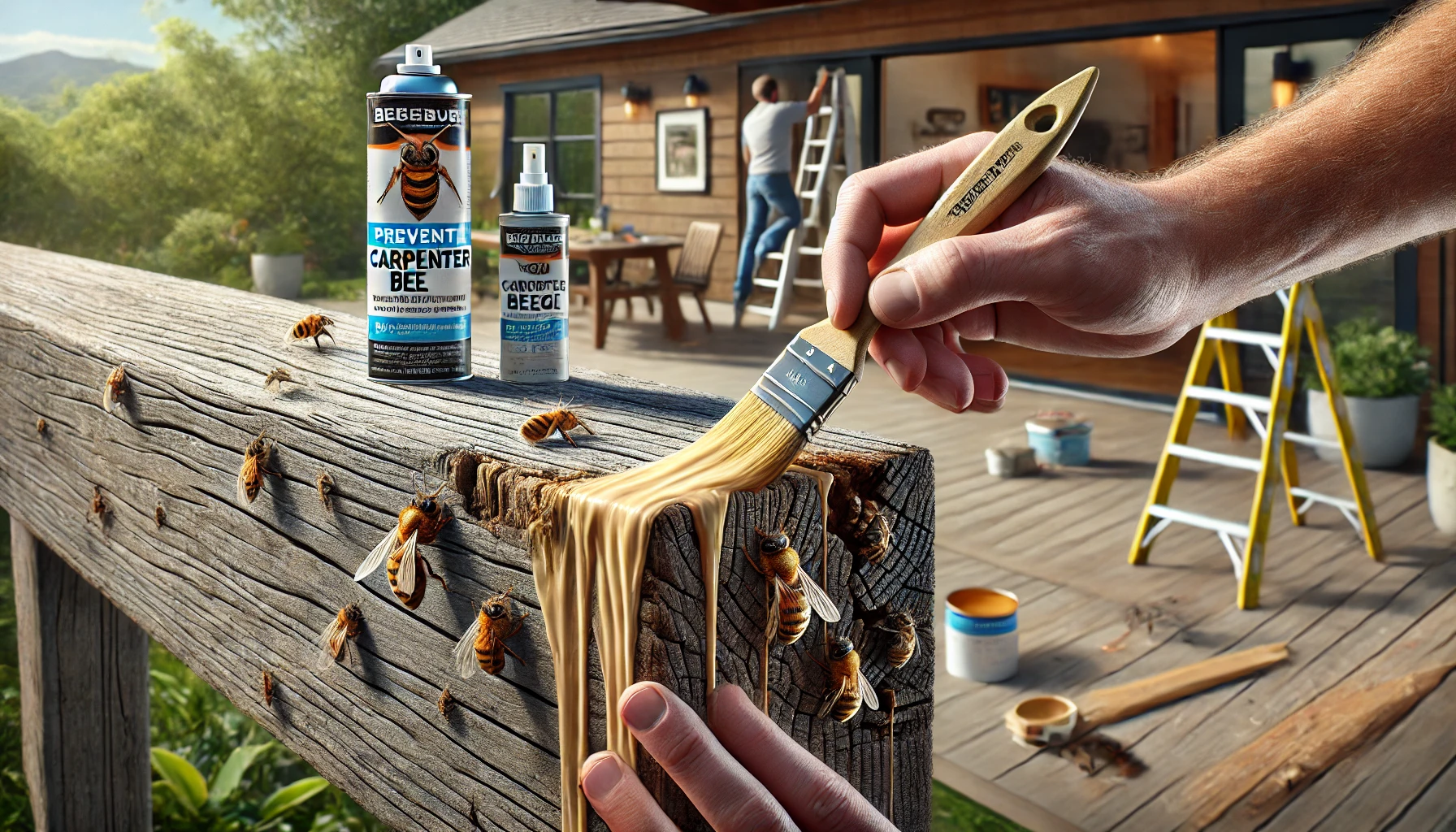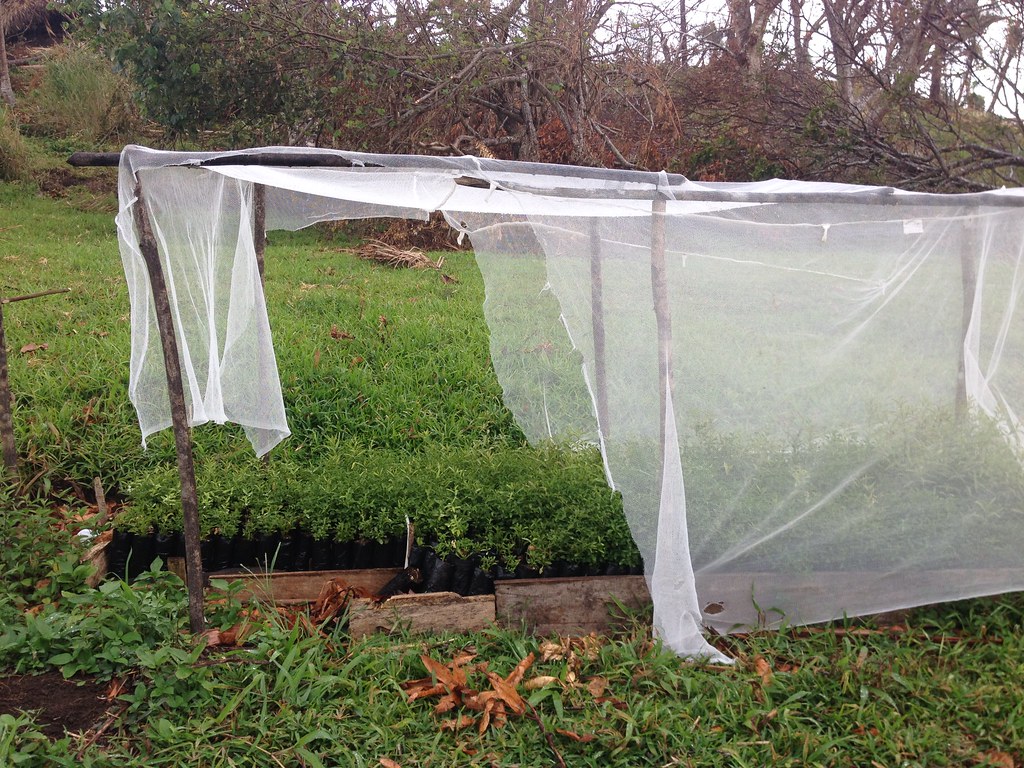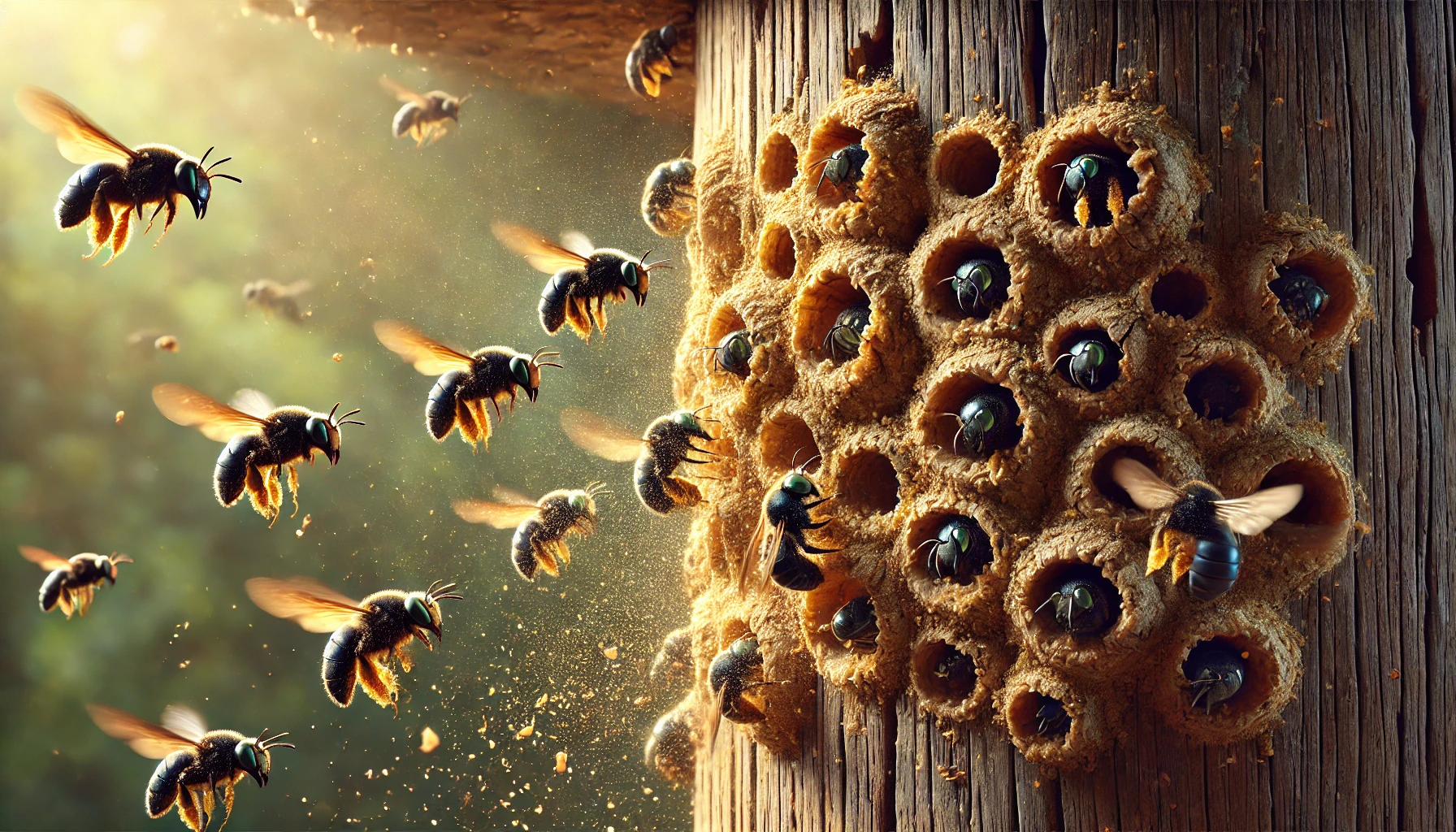Key Takeaways
-
Seal Potential Entry Points: Prevent bees from nesting by sealing cracks, holes, vents, and abandoned rodent burrows around your home.
-
Remove Attractants: Discourage bee activity by eliminating sugary substances, fallen fruits, and sweet-smelling scents.
-
Use Strategic Landscaping: Plant bee-repelling plants like mint, citronella, and eucalyptus to keep bees away from entry points and high-traffic areas.
-
Apply Natural Deterrents: Use peppermint or eucalyptus oils, vinegar sprays, or citrus solutions to safely prevent bee infestations.
-
Seek Professional Help: Regular monitoring and safe bee nest removal by professional beekeepers or pest control experts is recommended if bees become established.
 Bees are essential for pollination and a thriving ecosystem, but when they decide to nest too close to your home, they can become a nuisance—or even a danger, especially for those with allergies. Preventing bees from nesting around your house requires a proactive approach, combining physical barriers, natural deterrents, and proper yard maintenance. By following the strategies outlined below, you can keep your home bee-free while respecting these important pollinators.
Bees are essential for pollination and a thriving ecosystem, but when they decide to nest too close to your home, they can become a nuisance—or even a danger, especially for those with allergies. Preventing bees from nesting around your house requires a proactive approach, combining physical barriers, natural deterrents, and proper yard maintenance. By following the strategies outlined below, you can keep your home bee-free while respecting these important pollinators.
Seal Entry Points and Nesting Sites
One of the most effective ways to prevent bees from making a home near yours is to eliminate potential nesting sites before they arrive. Bees often look for small crevices, gaps, and hollow spaces to establish colonies, so sealing these areas is crucial.Prevent Bees from Nesting
-
Inspect and Seal Cracks and Holes: Bees can squeeze through small openings in siding, soffits, eaves, and foundation gaps. Use silicone caulk, expanding foam, or weatherproof sealants to close cracks or holes around windows, vents, and walls.
-
Screen Vents and Openings: Ensure that chimney openings, attic vents, and air ducts are covered with fine mesh screens (¼ inch or smaller) to keep bees from entering.
-
Secure Outdoor Structures: Regularly inspect sheds, garages, and playhouses for gaps or small holes that could serve as nesting spots.
-
Fill Abandoned Rodent Holes: Ground-nesting bees, such as bumblebees and miner bees, often use abandoned rodent burrows for shelter. Fill these holes with soil or gravel to discourage them from settling in your yard.


Not getting a solution?
Get your free pest control estimate today!Reduce Attractants Around Your Home
Bees are drawn to food sources, particularly sugary substances and certain scents. Eliminating these attractions can make your home less appealing to them.- Cover Trash Bins: Ensure that garbage cans have tight-fitting lids and are kept clean, as the smell of food waste and sweet beverages can attract bees.
- Limit Sweet-Smelling Scents: Perfumes, scented candles, and floral air fresheners can lure bees toward entry points of your home. Opt for unscented products when spending time outdoors.
- Rinse Recyclables: Empty soda cans, juice containers, and other sugary beverage bottles should be rinsed thoroughly before being placed in recycling bins.
- Pick Up Fallen Fruit: If you have fruit trees in your yard, promptly remove any fallen fruit that could serve as a food source for bees.
- Manage Compost Bins: Keep compost bins sealed and mix compost regularly to prevent fermentation, which can attract bees.

Modify Your Landscaping to Discourage Bees
-
Keep Flowering Plants Away from Entry Points: Plant flowers away from patios, doors, and walkways to prevent bees from lingering near your home.
-
Use Bee-Repelling Plants: Certain plants like mint, citronella, eucalyptus, basil, marigolds, and wormwood naturally deter bees. Plant them near windows, decks, and outdoor seating areas.
-
Maintain Your Lawn and Shrubs: Regular mowing, trimming, and removing overgrown vegetation help eliminate sheltered nesting areas for bees.
-
Minimize Bare Patches of Soil: Ground-nesting bees prefer exposed soil for burrowing. Cover bare patches with mulch, gravel, or grass seed to discourage them.
Utilize Natural Bee Deterrents
-
Cinnamon and Garlic Powder: Sprinkle cinnamon or garlic powder in areas where bees have been seen to deter them from returning.
-
Essential Oils: Bees dislike strong scents like peppermint, eucalyptus, citronella, and clove oil. Mix a few drops with water and spray around doors, windows, and nesting sites.
-
Vinegar Spray: A solution of equal parts vinegar and water sprayed on surfaces helps repel bees from common gathering spots.
-
Citrus Peel Spray: Boil citrus peels (lemon, lime, or orange) in water, let it cool, and spray the mixture in areas where bees have been active.
-
Mothballs or Dryer Sheets: These contain chemicals that bees find unpleasant. Place them near common nesting areas like porch eaves, shed rafters, and patio furniture.
Prevent Carpenter Bees from Drilling into Wood
Carpenter bees are known for drilling holes into untreated wood to lay their eggs. Preventing their activity requires additional measures beyond general bee deterrence.- Paint or Stain Wooden Surfaces: Carpenter bees prefer untreated, weathered wood. Applying paint or a protective sealant can make it less attractive for nesting.
- Fill Existing Holes: If you notice round holes in wooden structures, fill them with wood putty or caulk to prevent reuse.
- Use Harder Woods: If possible, opt for hardwoods such as oak or teak for decks and outdoor furniture, as they are less appealing to carpenter bees.
- Hang Carpenter Bee Traps: These traps mimic nesting sites and lure the bees away from your home.

Monitor for Early Signs of Bee Activity
Regular inspections of your home and yard can help you to identify and address potential bee problems before they become major issues.- Look for Scout Bees: If you see bees frequently hovering around a certain area, they may be scouting for a nesting site. Take preventive measures immediately.
- Check for Swarms: A cluster of bees gathering on a tree limb, fence, or under the eaves may indicate that a swarm is looking for a permanent nesting location. Swarms should be removed by a professional beekeeper.
- Inspect Hidden Spaces: Examine attics, sheds, and other enclosed spaces for signs of bee activity, such as buzzing sounds, increased bee traffic, or visible honeycomb formations.
Safe Removal of Existing Bee Nests
If a colony has already established itself around your home, do not attempt to remove it yourself. Instead, consider the following options:- Contact a Local Beekeeper: Many beekeepers offer free or low-cost bee removal services and will relocate the hive to a safer location.
- Call a Professional Pest Control Service: If the bees pose a threat to your household, licensed professionals can safely remove them without causing unnecessary harm to the environment.
- Avoid Blocking Hive Entrances: If bees are nesting in a wall or attic, sealing their entry points without proper removal could cause them to chew through drywall or vents, potentially leading to interior infestations.
- Address the Root Cause: After removal, thoroughly clean and seal the area to prevent another colony from moving in. Bees are often attracted to areas where old hives were previously located.
Maintaining a Bee-Free Environment Year-Round
Preventing bees from nesting around your house is an ongoing effort that requires consistent maintenance and seasonal adjustments. By keeping your property free of inviting nesting sites, reducing attractants, and using natural deterrents, you can enjoy a safe and bee-free home while still allowing these essential pollinators to thrive elsewhere.If you feel things have gone out of control, it is advised to contact pest control professionals. Our team can provide a customized approach to protect your home effectively. Visit our Species, Control, and DIY Guide sections for additional resources on bee and ways to tackle a bee infestation.





